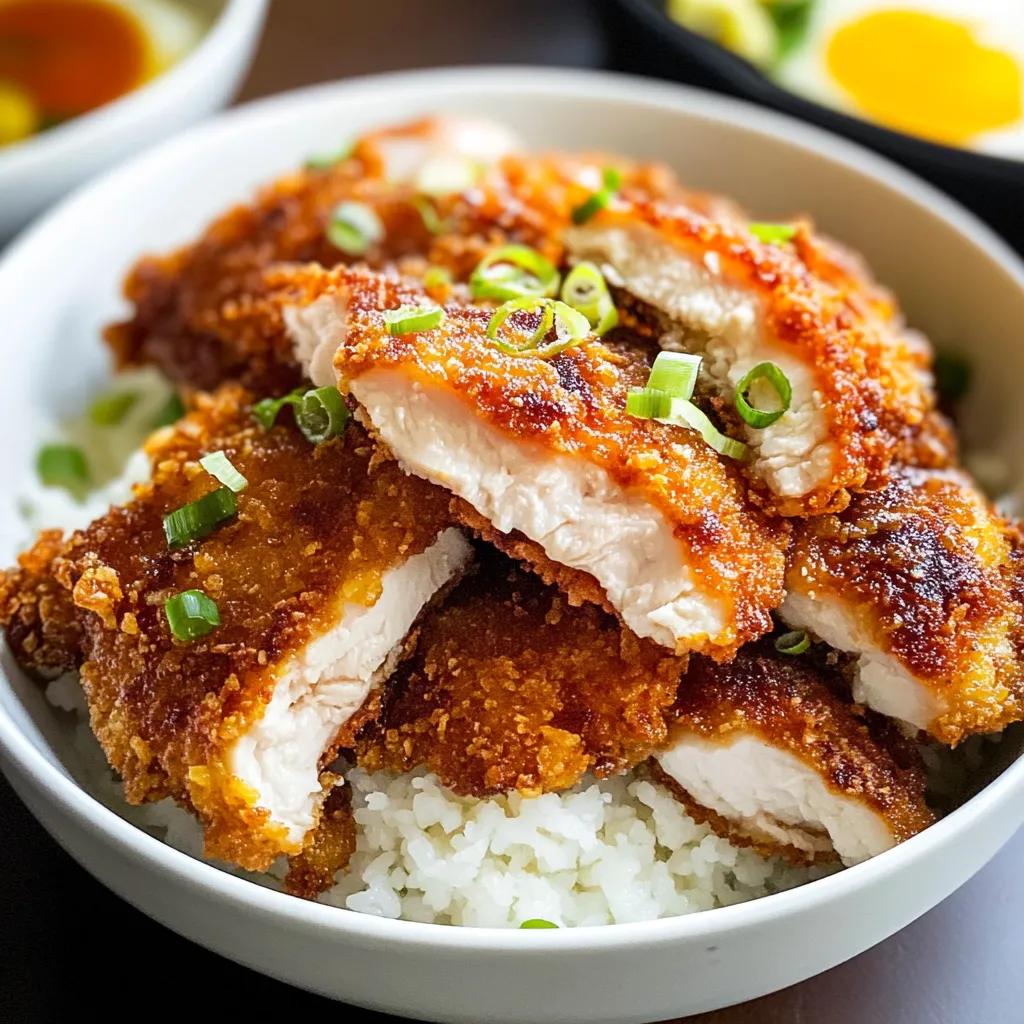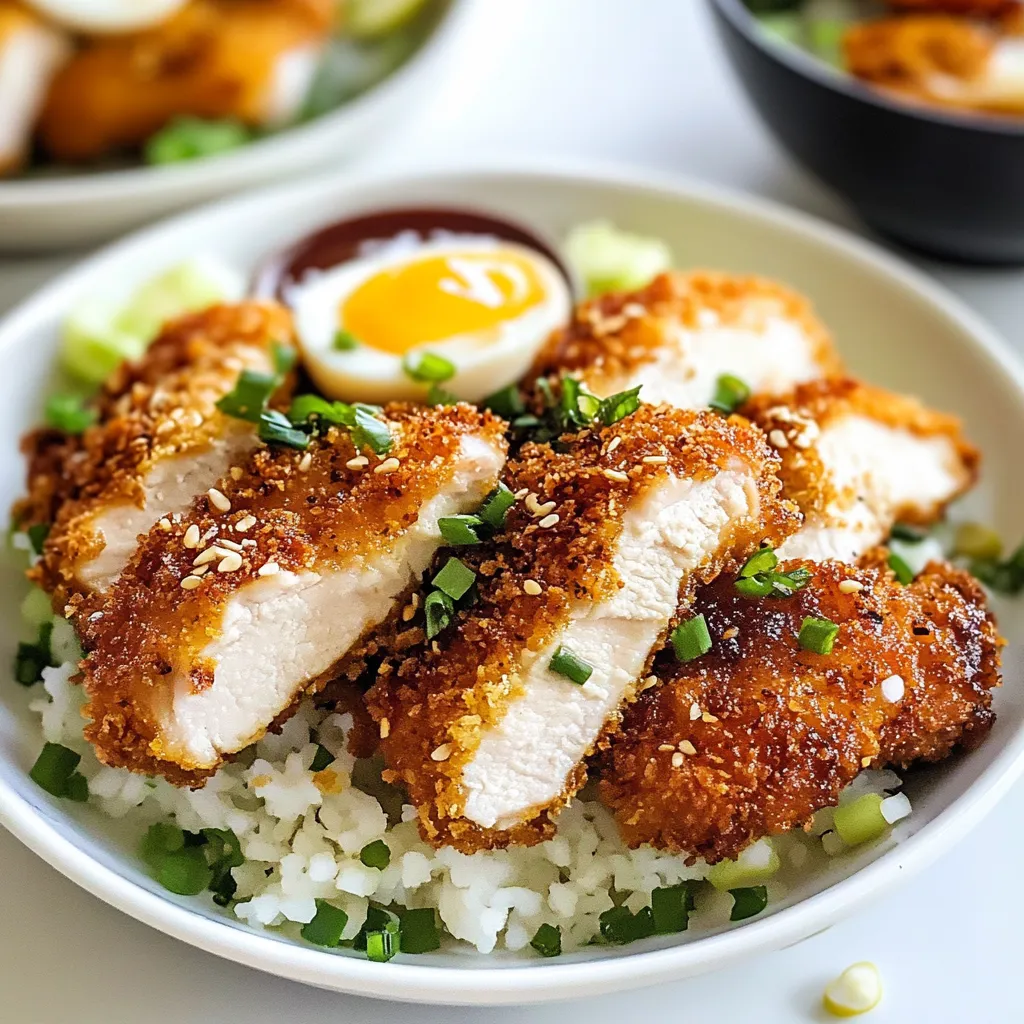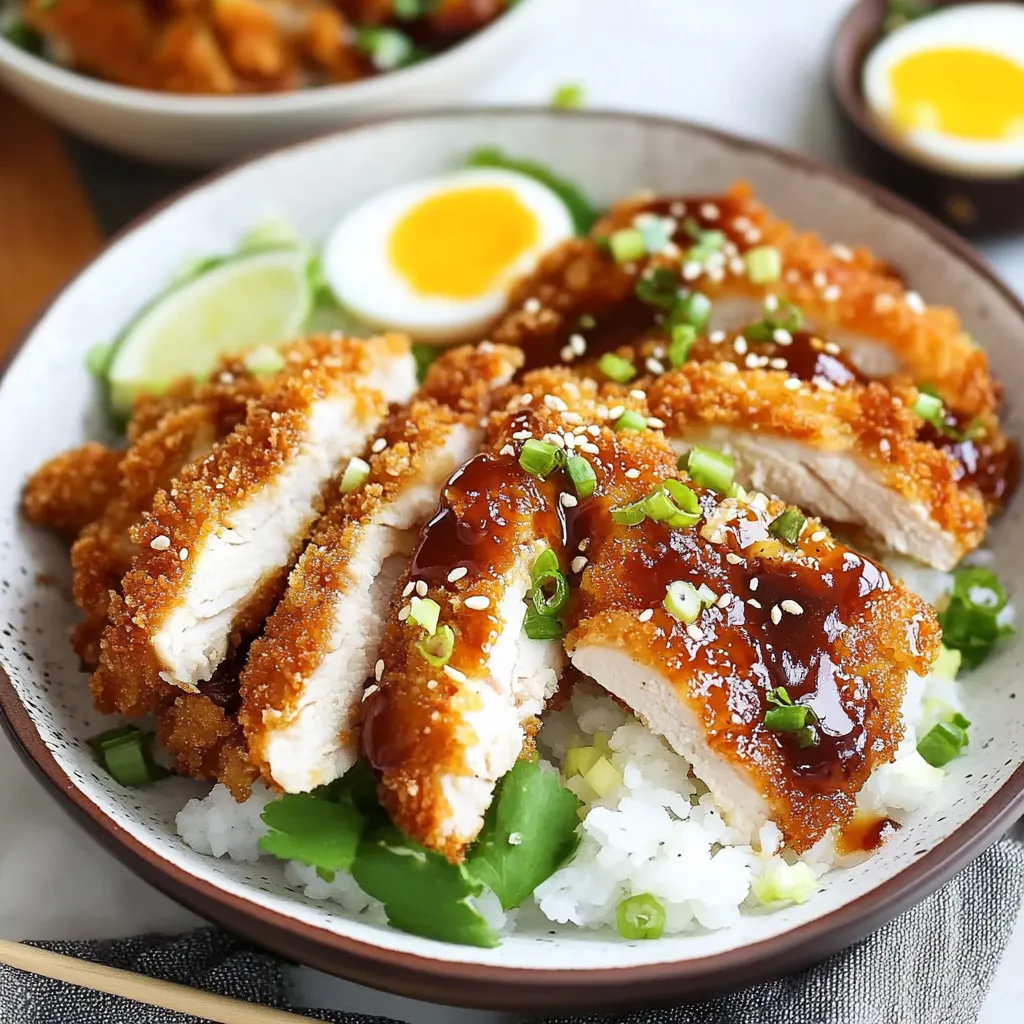 Pin it
Pin it
I'm gonna walk you through making super crunchy Chicken Katsu step-by-step. This Japanese twist on fried chicken turns basic stuff from your kitchen into something you won't be able to stop eating.
After trying tons of methods, I found that adding seasoning to each part and letting the chicken sit before frying makes it stay super crunchy from the first bite to the last.
Key Components
- Boneless skinless chicken thighs: Keeps everything juicy
- Panko breadcrumbs: Gives that amazing crunch
- All-purpose flour: Makes the first layer
- Large eggs: Makes everything stick together
- Seasonings (salt, pepper, garlic powder): Adds flavor throughout
- Vegetable oil: Great for hot frying
Step-By-Step Process
- Getting The Chicken Ready
- Dry the chicken thighs completely, Trim any extra fat, Warm to room temp, Add salt and pepper directly
- Making Your Coating Station
- Get three flat dishes ready, Put seasoned flour in the first one, Mix eggs and milk in the second, Add seasoned panko in the third, Line them up for easy dipping
- Coating The Chicken
- Roll in the flour mixture, Tap off any extra, Soak in the egg mix fully, Let drips fall off, Push firmly into the panko, Make sure all sides get covered
- Letting It Set
- Put coated pieces on a wire rack, Wait at least 10 minutes, Get oil hot to 350°F while waiting, Keep a cooking thermometer handy
- Frying It Up
- Pour enough oil to cover half the chicken, Keep temp between 340-350°F, Cook 4-5 minutes each side until golden brown, Put on clean rack to drain, Add salt while still hot
 Pin it
Pin it
Ways To Enjoy
Put it on top of rice, Pair with shredded cabbage, Drizzle with Japanese curry, Tuck into sandwiches or bowls
Bottom line: This Chicken Katsu turns out just like what you'd get at a restaurant but you can make it right at home. Whether you go traditional with curry or modern with a rice bowl, your family will ask for it again and again.
 Pin it
Pin it
Frequently Asked Questions
- → How hot should the oil be when frying Chicken Katsu?
- Keep the oil temperature at 350°F (175°C) to cook the chicken through evenly while getting a crispy outside.
- → Can I switch the chicken thighs for breasts?
- Absolutely! Just make sure you pound the breast meat to even thickness for consistent cooking.
- → Why should I let the chicken rest after breading?
- Resting the coated chicken helps the layers stick better, so the crust stays intact during frying.
- → What’s the best way to eat Chicken Katsu?
- Slice it up and enjoy it over warm rice, inside sandwiches, or with fresh, crunchy vegetables.
- → Can I prepare Chicken Katsu ahead of time?
- While fresh is best, you can keep it warm in a low oven for about half an hour before serving.
